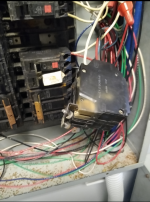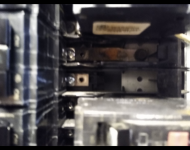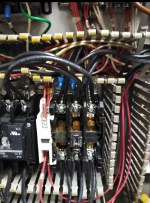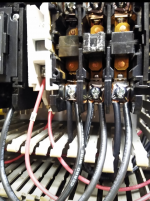Thank you! Hopefully we can put a couple of these into actionOK, for trouble shooting: Obviously, circuits setup with open neutrals, bad CTs or burden resistors, white wire turned brown on 3 pahse with harmonics, ghost voltage setups, etc, etc.....
The group here can likely send you their favorite trouble shooting horror story.
For 60 Hz, my favorite is tripping a QO 20A branch circuit breaker while simultaneously tripping a 3 phase 400A breaker due to an office worker plugging in a laptop power supply - lab exercise: how and why did that happen, what is the fix?
You are using an out of date browser. It may not display this or other websites correctly.
You should upgrade or use an alternative browser.
You should upgrade or use an alternative browser.
2nd Year Apprentice labs
- Thread starter ZSmith
- Start date
- Status
- Not open for further replies.
kwired
Electron manager
- Location
- NE Nebraska
- Occupation
- EC
Real time arc flash and circuit breaker time to trip demonstrations, with appropriate safety in place of course.
Demo of wire fusing and how to destroy a screwdriver.
I' d even let students trip a 30 A breaker with an old screwdriver. Face shield and hearing protection of course, possibly even gloves if very safety conscious.
Need different sources with different available fault current at said test points to show that not every install is alike. Not every OCPD has same magnetic trip setting either. Been many times I've seen QO and Homeline - in particular single pole 15 and 20 amp breakers trip on a line to ground fault and there is nearly no noticeable spark where other breakers and/or other applications you get lots of fireworks. Available fault current differences as well as the lower magnetic trip setting of those mentioned Square D breakers makes a difference.OK, for trouble shooting: Obviously, circuits setup with open neutrals, bad CTs or burden resistors, white wire turned brown on 3 pahse with harmonics, ghost voltage setups, etc, etc.....
The group here can likely send you their favorite trouble shooting horror story.
For 60 Hz, my favorite is tripping a QO 20A branch circuit breaker while simultaneously tripping a 3 phase 400A breaker due to an office worker plugging in a laptop power supply - lab exercise: how and why did that happen, what is the fix?
I still think most troubleshooting tips and tricks are learned as you go in real life situations. Just encountered a bad neutral at the meter socket a few days ago. Wasn't so bad the problem was obvious, but at same time when I arrived there wasn't much running at the time, sounds like the problem did get worse at times - probably when neutral was more loaded and the bad spot heated up more. I did some tests adding a 1000-1200 watt heater load to try to make it show itself got some imbalance but nothing extreme yet enough to still be concerned.
Eventually got the meter pulled and did not have to test - was obvious the neutral termination has been hot before. You can teach this but I would think it is hard to actually duplicate it in a lab.
junkhound
Senior Member
- Location
- Renton, WA
- Occupation
- EE, power electronics specialty
in particular single pole 15 and 20 amp breakers trip on a line to ground fault and there is nearly no noticeable spark where other breakers and/or other applications you get lots of fireworks.
Excellent point, ------- the lab NEEDS to have oscilloscopes in addition to simple meters, Screwdriver makes contact across terminals at peak of sine wave, big sparks, near zero crossing, no spark.
also Much easier to show inrush concepts with a scope also. Even easier with storage scopes, which nearly all decent new scopes are since mid '90's. Even labs on strict budget can get a 20 or 15 YO storage scope used for less than the price of a new Fluke meter.
Scope and CT and different type breakers also instructive, as mentioned by kwired, 20A QO will trip on first few cycle of short circuit current, a GE breaker will take a few more cycles before tripping if there are a few dozen feet of 12 AWG
Excellent point, ------- the lab NEEDS to have oscilloscopes in addition to simple meters, Screwdriver makes contact across terminals at peak of sine wave, big sparks, near zero crossing, no spark.
also Much easier to show inrush concepts with a scope also. Even easier with storage scopes, which nearly all decent new scopes are since mid '90's. Even labs on strict budget can get a 20 or 15 YO storage scope used for less than the price of a new Fluke meter.
Scope and CT and different type breakers also instructive, as mentioned by kwired, 20A QO will trip on first few cycle of short circuit current, a GE breaker will take a few more cycles before tripping if there are a few dozen feet of 12 AWG
n1ist
Senior Member
- Location
- Massachusetts
- Occupation
- Principal Electrical Engineer
Make sure they watch
before using the scope on a non-isolated circuit. Too easy to blow up yourself or the scope, and it is too hard to get replacement scopes...
I appreciate the feedback! Hope to generate some discussion off of this.Need different sources with different available fault current at said test points to show that not every install is alike. Not every OCPD has same magnetic trip setting either. Been many times I've seen QO and Homeline - in particular single pole 15 and 20 amp breakers trip on a line to ground fault and there is nearly no noticeable spark where other breakers and/or other applications you get lots of fireworks. Available fault current differences as well as the lower magnetic trip setting of those mentioned Square D breakers makes a difference.
I still think most troubleshooting tips and tricks are learned as you go in real life situations. Just encountered a bad neutral at the meter socket a few days ago. Wasn't so bad the problem was obvious, but at same time when I arrived there wasn't much running at the time, sounds like the problem did get worse at times - probably when neutral was more loaded and the bad spot heated up more. I did some tests adding a 1000-1200 watt heater load to try to make it show itself got some imbalance but nothing extreme yet enough to still be concerned.
Eventually got the meter pulled and did not have to test - was obvious the neutral termination has been hot before. You can teach this but I would think it is hard to actually duplicate it in a lab.
Thanks!in particular single pole 15 and 20 amp breakers trip on a line to ground fault and there is nearly no noticeable spark where other breakers and/or other applications you get lots of fireworks.
Excellent point, ------- the lab NEEDS to have oscilloscopes in addition to simple meters, Screwdriver makes contact across terminals at peak of sine wave, big sparks, near zero crossing, no spark.
also Much easier to show inrush concepts with a scope also. Even easier with storage scopes, which nearly all decent new scopes are since mid '90's. Even labs on strict budget can get a 20 or 15 YO storage scope used for less than the price of a new Fluke meter.
Scope and CT and different type breakers also instructive, as mentioned by kwired, 20A QO will trip on first few cycle of short circuit current, a GE breaker will take a few more cycles before tripping if there are a few dozen feet of 12 AWG
Strathead
Senior Member
- Location
- Ocala, Florida, USA
- Occupation
- Electrician/Estimator/Project Manager/Superintendent
That is 3rd year here. Not that most of them "learn" it, but it is taught.what does a second year apprentice need to know that a lab would be helpful to learn?
I wish someone would teach apprentices to read normal electrical control schematics.
Strathead
Senior Member
- Location
- Ocala, Florida, USA
- Occupation
- Electrician/Estimator/Project Manager/Superintendent
Both this and conduit bending are things I taught in lab in the past. We just started the MH series for all years this year, and I barely have time to cover everything in the books. As you have indicated, you have OJT, so what are you expecting them to be taught in OJT? Our program is for local contractors, and many of them are residential only, etc. A problem is that many actually most of the students don't get diverse experience in the field. In my opinion, if you are truly wising to plan labs, you should look at a structure of all 4 years and what should be taught, and then figure out which things fit best in which year, vs. which things should be taught in the field.Thank you! I have written that down!
In the vein of teaching troubleshooting, I have wanted to set up a test board, with a 3 wire multiwire branch circuit and two different size light bulbs. The have a means of introducing resistance at various points in the circuit and to disconnect the neutral and let the students experience this. In reality, I believe this could be done in both the first years, and then again in the second year to reinforce. PS, I haven't done it.
Appreciate the insight!That is 3rd year here. Not that most of them "learn" it, but it is taught.
What is your class schedule? We run the MH curriculum as well, and we go 1 night a week for 4 hours. We have 2 eighteen week semesters. Hopefully the OJT experience covers the competency of an apprentice in the field (skills needed to be reliable).Both this and conduit bending are things I taught in lab in the past. We just started the MH series for all years this year, and I barely have time to cover everything in the books. As you have indicated, you have OJT, so what are you expecting them to be taught in OJT? Our program is for local contractors, and many of them are residential only, etc. A problem is that many actually most of the students don't get diverse experience in the field. In my opinion, if you are truly wising to plan labs, you should look at a structure of all 4 years and what should be taught, and then figure out which things fit best in which year, vs. which things should be taught in the field.
In the vein of teaching troubleshooting, I have wanted to set up a test board, with a 3 wire multiwire branch circuit and two different size light bulbs. The have a means of introducing resistance at various points in the circuit and to disconnect the neutral and let the students experience this. In reality, I believe this could be done in both the first years, and then again in the second year to reinforce. PS, I haven't done it.
I will look at the troubleshooting recommendations, thanks!
Strathead
Senior Member
- Location
- Ocala, Florida, USA
- Occupation
- Electrician/Estimator/Project Manager/Superintendent
2 nights a week, allegedly 3 hours a night for a total of 153 hours, but it is usually about 2.5 hours but we don't take a break.What is your class schedule? We run the MH curriculum as well, and we go 1 night a week for 4 hours. We have 2 eighteen week semesters. Hopefully the OJT experience covers the competency of an apprentice in the field (skills needed to be reliable).
I will look at the troubleshooting recommendations, thanks!
4x4dually
Senior Member
- Location
- Stillwater, OK
- Occupation
- Electrical Engineer/ Ex-Electrician
You could wire up some pre-faulted circuits and let them trouble shoot them. Wire up some motor starters with controls and terminate a wire or two without stripping them so they look correct but won't conduct. Let them see if they can figure out what's wrong. Put in some bad fuses, etc. We do that with electronics sometime. If we go out to train folks in the field, we purposely create pre-faulted modules. We take a component off a board or something and see if the students can find the issue. It teaches the to start at the beginning with a schematic or diagram and trace the functionality through the system on paper as well as with a meter or scope. They learn to read drawings and use diagnosis tools at the same time.
Ok, that's what our school had as its schedule last year. We do 9 sessions a term instead of 13 in the MH curriculum. We have 3 lab nights each semester since our hours come out to exactly 144.2 nights a week, allegedly 3 hours a night for a total of 153 hours, but it is usually about 2.5 hours but we don't take a break.
I really appreciate the idea, thanks! This seems very doable!You could wire up some pre-faulted circuits and let them trouble shoot them. Wire up some motor starters with controls and terminate a wire or two without stripping them so they look correct but won't conduct. Let them see if they can figure out what's wrong. Put in some bad fuses, etc. We do that with electronics sometime. If we go out to train folks in the field, we purposely create pre-faulted modules. We take a component off a board or something and see if the students can find the issue. It teaches the to start at the beginning with a schematic or diagram and trace the functionality through the system on paper as well as with a meter or scope. They learn to read drawings and use diagnosis tools at the same time.
Tulsa Electrician
Senior Member
- Location
- Tulsa
- Occupation
- Electrician
I agree this would be a great idea.You could wire up some pre-faulted circuits and let them trouble shoot them. Wire up some motor starters with controls and terminate a wire or two without stripping them so they look correct but won't conduct. Let them see if they can figure out what's wrong. Put in some bad fuses, etc. We do that with electronics sometime. If we go out to train folks in the field, we purposely create pre-faulted modules. We take a component off a board or something and see if the students can find the issue. It teaches the to start at the beginning with a schematic or diagram and trace the functionality through the system on paper as well as with a meter or scope. They learn to read drawings and use diagnosis tools at the same time.
I have pictures of work which reflects about all of what he says.
Attachments
-
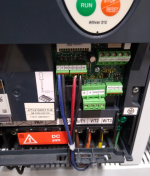 Screenshot_20230207-162753.png725.1 KB · Views: 6
Screenshot_20230207-162753.png725.1 KB · Views: 6 -
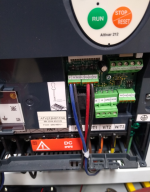 Screenshot_20230207-162737.png768.7 KB · Views: 5
Screenshot_20230207-162737.png768.7 KB · Views: 5 -
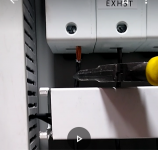 Screenshot_20230207-162641.png353.9 KB · Views: 4
Screenshot_20230207-162641.png353.9 KB · Views: 4 -
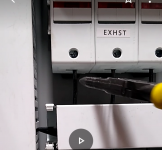 Screenshot_20230207-162609.png337.7 KB · Views: 5
Screenshot_20230207-162609.png337.7 KB · Views: 5 -
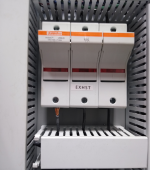 Screenshot_20230207-162527.png593 KB · Views: 4
Screenshot_20230207-162527.png593 KB · Views: 4 -
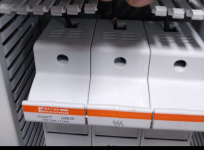 Screenshot_20230207-162511.png344.3 KB · Views: 5
Screenshot_20230207-162511.png344.3 KB · Views: 5 -
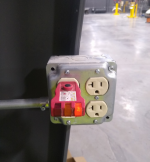 Screenshot_20230207-162336.png484.5 KB · Views: 6
Screenshot_20230207-162336.png484.5 KB · Views: 6 -
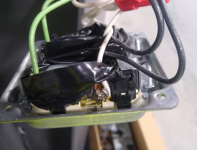 Screenshot_20230207-162315.png467 KB · Views: 5
Screenshot_20230207-162315.png467 KB · Views: 5 -
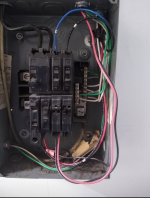 Screenshot_20230207-160848.png705.2 KB · Views: 5
Screenshot_20230207-160848.png705.2 KB · Views: 5
I'm the director of my company's education center and I am looking for ideas for worthwhile labs for second year apprentices. Any and all ideas/suggestions are welcome!
Thank you in advance.
See if they can solve this puzzle.
Veteran electrician gave me a challenge
So, I asked a 36 year veteran electrician to teach me something. He had me map out how to wire 4 or 5 different scenarios and I was doing very well, but this last one stumped me. The task is this, how to wire (5) 3-way switch's so that the light will only come on when all the switch's are...
forums.mikeholt.com
Awesome! The pics are very helpful thank you!I agree this would be a great idea.
I have pictures of work which reflects about all of what he says.
Tulsa Electrician
Senior Member
- Location
- Tulsa
- Occupation
- Electrician
I have plenty feel free to ask.Awesome! The pics are very helpful thank you!
They were having motor issue. Pool pump in a gym. Pump was not the issue.
The maintenance team said they replaced two pump and now a third. The breaker would rest after each replacement.
When looking at the pic also look for other issues. Check out the handle of the common trip breaks below the one I had out.
For a temp repair we moved the pump to a new spot and also relocated the load across from it until other repairs could be made.
Reversing contactor for a commercial disposal.
If would reverse and was going into lock rotor.
Maintenance got it to work by using a screw driver jamming in the forward contactor.
The reverse contactor has a welded set of contacts.
You can see the marks in the pick.
Plus he showed me. I said don't do that again.
Need to look for full pic. We reworked the whole box and install thermal over load protection.
It was hot wired.
When I run across these items the first thing I ask the apprentice to do is take a good long hard visual insp.
Ask your your self what's missing.
In this case no overload protection.
The motor was a three phase with no built in thermal protection.
I ask them to draw these out. Simply using what's required for this motor circuit.
You will also notice the inter locking control wireing keep it from running with out a screw driver jamming the forward contactor in.
The inter locking had a reversing control circuit with a timer so it would change direction after each cycle run.
Fun stuff.
Attachments
Could you send me your email contact? zsmith@streibco.comI have plenty feel free to ask.
They were having motor issue. Pool pump in a gym. Pump was not the issue.
The maintenance team said they replaced two pump and now a third. The breaker would rest after each replacement.
When looking at the pic also look for other issues. Check out the handle of the common trip breaks below the one I had out.
For a temp repair we moved the pump to a new spot and also relocated the load across from it until other repairs could be made.
Reversing contactor for a commercial disposal.
If would reverse and was going into lock rotor.
Maintenance got it to work by using a screw driver jamming in the forward contactor.
The reverse contactor has a welded set of contacts.
You can see the marks in the pick.
Plus he showed me. I said don't do that again.
Need to look for full pic. We reworked the whole box and install thermal over load protection.
It was hot wired.
When I run across these items the first thing I ask the apprentice to do is take a good long hard visual insp.
Ask your your self what's missing.
In this case no overload protection.
The motor was a three phase with no built in thermal protection.
I ask them to draw these out. Simply using what's required for this motor circuit.
You will also notice the inter locking control wireing keep it from running with out a screw driver jamming the forward contactor in.
The inter locking had a reversing control circuit with a timer so it would change direction after each cycle run.
Fun stuff.
Appreciate it!See if they can solve this puzzle.
Veteran electrician gave me a challenge
So, I asked a 36 year veteran electrician to teach me something. He had me map out how to wire 4 or 5 different scenarios and I was doing very well, but this last one stumped me. The task is this, how to wire (5) 3-way switch's so that the light will only come on when all the switch's are...forums.mikeholt.com
- Status
- Not open for further replies.


